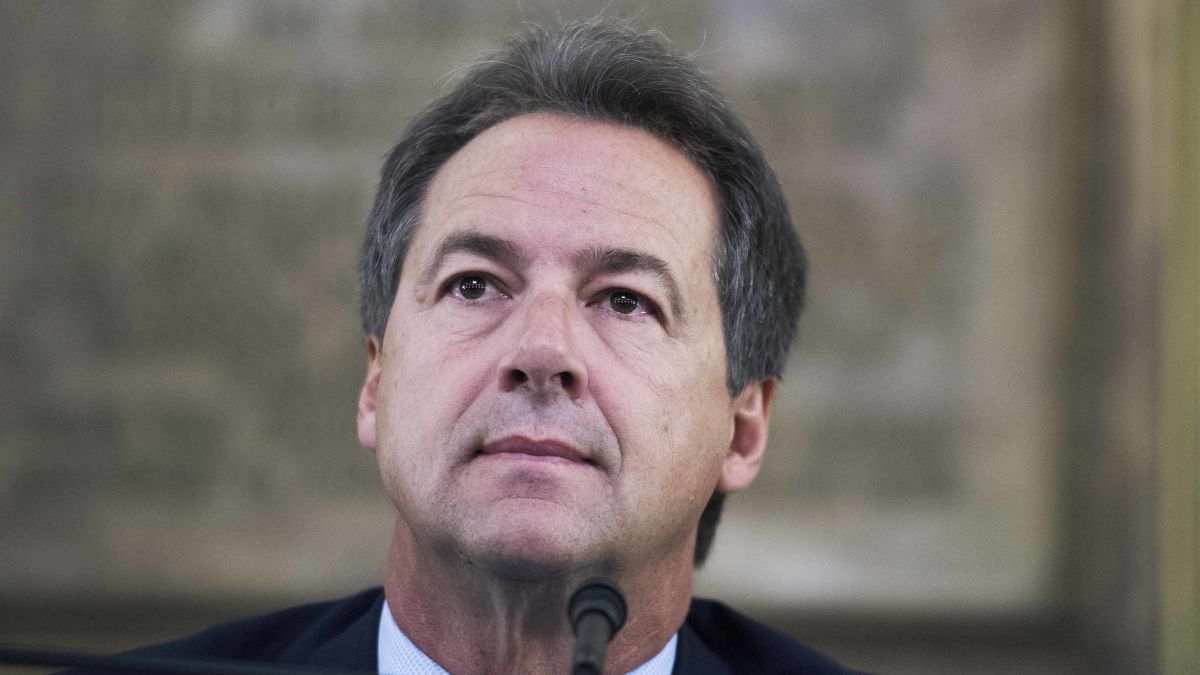 Washington, D.C., May 16 – Montana Gov. Steve Bullock is running for President on the idea that he is a Democratic Governor in a red state who knows how to work with people on both sides of the aisle. But how does he fare on disability issues?
Washington, D.C., May 16 – Montana Gov. Steve Bullock is running for President on the idea that he is a Democratic Governor in a red state who knows how to work with people on both sides of the aisle. But how does he fare on disability issues?
While running for re-election in 2016, Gov. Bullock completed the #PwDsVote Disability Campaign Questionnaire for presidential, senate and gubernatorial candidates put out by RespectAbility, a nonprofit organization fighting stigmas and advancing opportunities for and with people with disabilities. In his response to the questionnaire, he focused on employment, independent community living, veterans with disabilities, education, healthcare, caregivers support and workforce development issues.
One of the key accomplishments he highlighted in his response was expanding Medicaid in Montana. He wrote:
“At a time when partisan gridlock is paralyzing much of the nation, I’m proud to have passed the HELP Act in 2015, a bipartisan bill that expanded access to healthcare to tens of thousands of Montanans. We know that many of the people who now qualify for coverage under the HELP Act are individuals struggling with disabilities who may not yet qualify for Medicare or SSDI and home health care workers taking care of people with disabilities and until the HELP Act, couldn’t afford their own healthcare. We were able to get this important legislation passed because a bipartisan group of legislators was willing to come together and work with me on a compromise solution that put Montanans’ health above political ideology and partisan bickering.”
From ongoing efforts to strengthen “public schools instead of privatizing them” to reimagining programs “to better serve Montanans with disability in living the lives they choose and deserve,” Gov. Bullock has been a vocal and active supporter of the disability community.
Celebrating Disability Employment Awareness Month
In honor of Disability Employment Awareness Month this past October, Gov. Bullock released a proclamation renewing his state’s commitment to advancing opportunities for people with disabilities. “Welcoming the talents of all people, including people with disabilities, is a critical part of our efforts to build an inclusive community and stronger economy,” said Bullock in the proclamation. “This month, and every month, we celebrate the many and varied contributions people with disabilities have given to our state.”
Montana Loses 1,484 Jobs For People With Disabilities Last Year; Ranks 8th in the Country For Disability Employment Rate
While nationally 111,804 jobs were gained by people with disabilities, 1,484 people with disabilities Montana exited the workforce last year. Montana now ranks 8th in the nation for employment rates of people with disabilities with 31,935 of the 69,553 working-age (18-64) Montanans with disabilities being employed. The newly published 2018 Annual Disability Statistics Compendium shows Montana has maintained a 45.9 percent disability employment rate.
Montana has achieved this top-ten ranking through collaborative efforts with business owners and employers. At OMG Mongolian Grill in Butte, for example, “20 percent of the staff at the restaurant have a disability” and the restaurant owners “Tom and Kristi Cronnelly are encouraging other business owners to consider hiring those with disabilities.” Such stories bring Montana the noble honor of serving its working-age population of people with disabilities and hope that it will continue to trace a successful pattern for itself and other states, going forward.
Campaign Launch Has Mixed Results on Accessibility
When analyzing polls, it is integral to identify the participants’ demographics and determine where the candidate stands with swing voters. One important group of swing voters are people with disabilities, who comprise 20 percent of our country’s population – and 25 percent of adults in America. More than half of Americans have a loved one with a disability. A recent survey shows that fully three-quarters of likely voters either have a disability themselves or have a family member or a close friend with disabilities. Thus, if Gov. Bullock wants to succeed in his campaign, he must represent all Americans, especially those with disabilities.
For a presidential campaign to be fully inclusive of people with disabilities, it needs to meet the following requirements: (1) offer captioning with every video it shares or produces, (2) mention people with disabilities and their issues, (3) depict people with visible disabilities in its media, (4) reach out to the disability community, and (5) provide accessible campaign events and website.
While two pre-launch videos that Gov. Bullock released have accurate open captioning, the campaign launch video itself relies on YouTube’s auto-captioning, which often contains errors. Without accurate captions on all video content, people who are deaf or hard of hearing are being left out of the campaign. None of the photos on Bullock’s website have alt-text, which means that visitors who use screen readers will not know what is in the photos.
Additionally, while the campaign launch video shows diverse people from many backgrounds, nobody with a visible disability is featured in the video. And Gov. Bullock has not gone out of his way to target people with disabilities with his message thus far.
Voter research conducted by RespectAbility shows how disability issues connect to all aspects of American life. It is in the best interest of every presidential candidate and the citizens of this country for candidates to recognize disability issues during their campaigns.
“Candidates for office ignore the disability community at their peril,” said former U.S. Representative and Dallas Mayor Steve Bartlett. Bartlett, who was a primary author of the Americans With Disabilities Act of 1990, is the board chair of RespectAbility. “People with disabilities are politically active swing voters, and candidates should take note of the important issues they care about.”

Be First to Comment